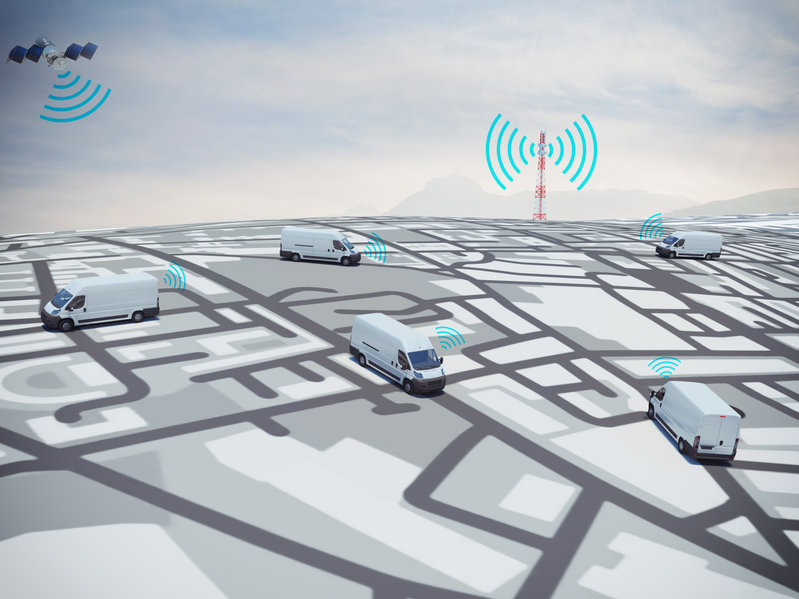In a mobile world, we’re now realizing that one of the absolute must-haves in most devices is positioning. Some applications are already commonplace: navigation in our phones and cars, finding wherever we parked the car or keeping track of our kids. Growing even faster is location services for the IoT in general, for drones, logistics tracking, positioning for static devices in agriculture and urban automation.
The market for GNSS is expected to grow at a CAGR of 17% through 2025, according to GlobeNewsWire. Markets and Markets expect the IoT location market to show a CAGR of nearly 38% through the end of 2022. This is a great opportunity, but the challenge is that there is no one perfect solution to all positioning needs. The best solution to meet a specific need often requires a mix of technologies.
COVID tracking
Proximity tracking for pandemic management has become common place throughout the world as a consequence of COVID. Bluetooth, primarily Bluetooth Low Energy (BLE), is the de facto choice for this, delivering an excellent match of reasonable accuracy coupled with very low power consumption, and most importantly, it is already widely available on mobile phones. Considering the alternatives, UWB would actually provide a more accurate measurement, but its deployment on mobile phones is only starting now and is far from universal. GNSS, although widely available on mobile phones, is far too power hungry to be left running for this application. This makes the choice of Bluetooth a textbook study in engineering pragmatism.
However, as in many applications, the whole solution is more than just proximity detection; you also need periodic cloud communication, via Wi-Fi and/or cellular broadband, facilities again readily available on phones. Of course, Covid itself doesn’t just infect those carrying mobile phones, but the low power of BLE again enables the deployment of low power wearable tags, such as those being deployed in Singapore’s TraceTogether system which incorporate Ambiq’s Apollo3 Blue MCU.
Worldwide logistics tracking
In a time of strained supply chains, it’s becoming even more important to know where your order is and how much longer you’ll have to wait to get it. This is a worldwide location problem, from Shenzhen, across the Pacific to Long Beach, to a warehouse, to your home or factory. Only GNSS can span this range.
But asset trackers must be very low power, continuing to operate through journeys of many weeks. For true package-level tracking (rather than pallet-level tracking), the asset tracking tag must be very lost cost. Traditional GNSS doesn’t quite meet this objective. Putting on the pragmatic hat again, we can compromise to ‘snapshot’ positioning rather than continuous tracking, with snapshots of position being calculated on a slower periodic basis. In addition to lower power, this also allows us to use software-based GNSS on shared hardware resources, substantially reducing the cost.
Once again, GNSS itself is not a complete solution. A cellular data link is essential to communicate position with wide area roaming, e.g., NB-IoT or Cat-M. Such an auxiliary link also allows for more rapid download of satellite orbital data, reducing GNSS on-device processing time, a technique known as Assisted GNSS. Some processing can even be offloaded to the cloud over that link. When the shipment gets to a warehouse or inside a tower block, a different solution is needed. GNSS doesn’t work indoors but there are almost certainly Wi-Fi access points (APs) around the building. Time of flight measurement to several APs provides enough accuracy to locate a package or palette to within 10 meters.
Bluetooth ranging, with AoA/AoD, can also be used, especially in a factory environment with dedicated infra-structure, but for ultimate in-factory accuracy, UWB is the winner, with its centimeter level accuracy and multi-path signal robustness. Such techniques can also be augmented with some integrated motion sensors (an inertial measurement unit or IMU) to orchestrate position calculations in a power efficient manner and to provide a level of dead reckoning.
Other location objectives
Navigation tracking and Real-Time Location Systems (RTLS) are massive market segments in themselves, but there are many other consumer applications, which can derive value from position information. “Find-my-stuff” applications like Apple’s AirTag are good examples.
High-end convenience applications like keyless entry to a car or a hotel room are also growing in popularity. Today this is based on Bluetooth but is vulnerable to man-in-the-middle / relay attacks. UWB however provides much more accurate measurements of the fob’s distance and delivers extra security through the nature of its physical (PHY) layer. By coupling UWB with BLE, as popularized by the FiRa Consortium and the Car Connectivity Consortium (CCC), you can enjoy both the low power benefits of BLE with the added security and accuracy of UWB.
The spatial awareness enabled by UWB’s precise ranging also creates new opportunities for users to interact with their devices, like point-to-control. Point your phone at an object you want to control (TV, thermostat, microwave) and the phone offers context-appropriate menu options.
Summary
As you can see, one size does not fit all in location services. It’s a fine balance of power consumption, cost and accuracy. The most compelling solutions use multiple techniques for determining position and communicating that position, even in mass market consumer products. Leaders like Apple already integrate GPS, cellular, Wi-Fi, Bluetooth and UWB, even in their smartwatches.

